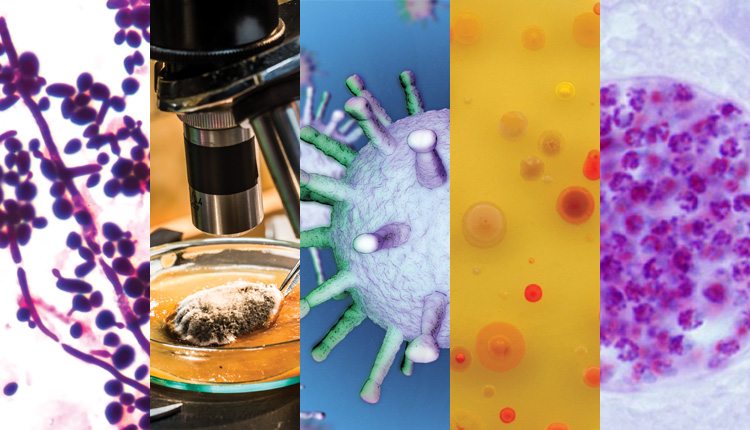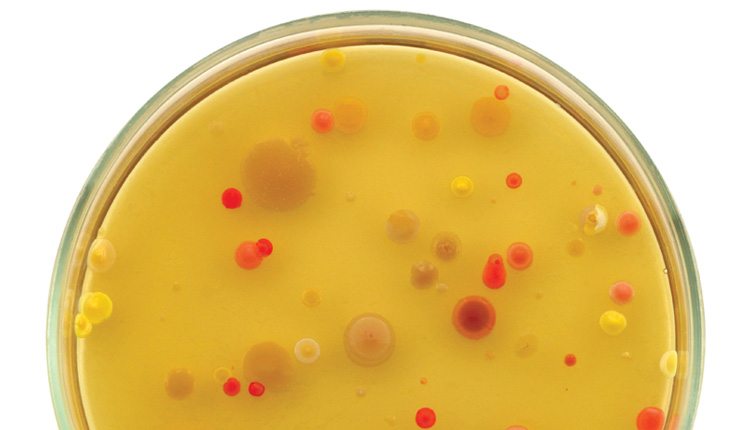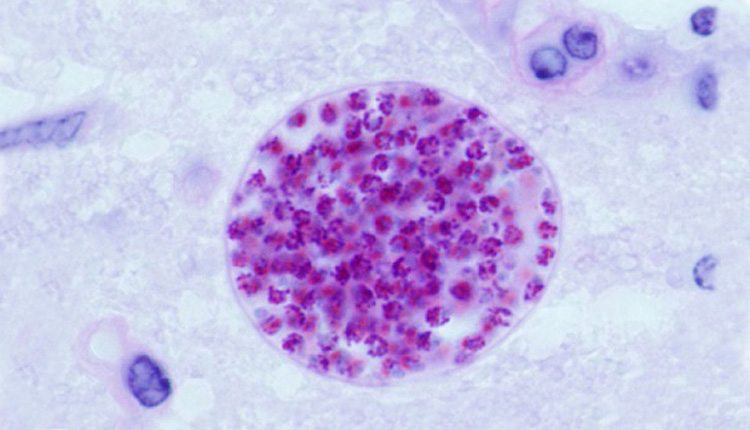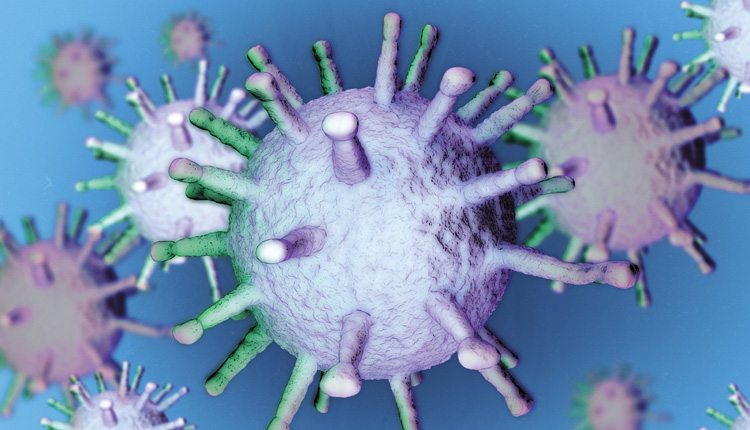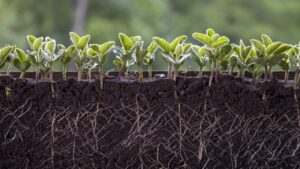Setting the confusion that is commonly associated with this sector of the industry aside, experts agree there’s tremendous growth potential and using “nature” naturally sits well with the public.
_x000D_
As the world’s food chain increases its focus on food quality, nutrition and “environmentally sustainable production,” the farm use of chemical fertilizers and pesticides is under greater scrutiny by the food chain and by regulators. It is becoming more difficult and costly to comply with regulatory requirements, and the number of new active chemical substances is declining._x000D_
_x000D_
At the same time, growers continue to search for ways to increase plant health and maximize yield, and they are increasingly turning to agricultural biologicals and natural products._x000D_
_x000D_
What are Biologicals?_x000D_
_x000D_
_x000D_
Agricultural biologicals are living organisms, such as bacteria and fungi, which enhance plant health and productivity (biofertility), or protect plants from pests and diseases (biological pest control)._x000D_
_x000D_
Biofertility products are bacteria or fungi used as soil or seed inoculants to drive nutrition into the plant. Daniel Samphir, Seed Applied Solutions marketing manager for Monsanto Canada says these products are well accepted and used by Canadian producers._x000D_
_x000D_
“Canadian growers, particularly pulse and soybean growers, are very familiar with these products,” he says. “In fact, around 95 per cent of pea and lentil growers use inoculants to improve nutrient availability for plants.”_x000D_
_x000D_
According to Samphir there is great potential in this sector._x000D_
_x000D_
_x000D_
“We are increasing our work to bring products to Canadian and other markets for cereals like corn and wheat,” he says._x000D_
_x000D_
Monsanto BioAg offers a number of biofertility products including:_x000D_
_x000D_
• JumpStart, a fungal inoculant that grows along the root of the plant and helps to make soil-bound phosphates available to the plant._x000D_
_x000D_
• QuickRoots, a seed inoculant that helps release nitrogen, phosphorus and potassium in the soil making them more available to plants._x000D_
_x000D_
• TagTeam LCO, an inoculant that provides phosphate and nitrogen by combining Pencillium bilaii, the active ingredient in JumpStart, with a nitrogen-fixing Rhizobium and the LCO molecule._x000D_
_x000D_
With regard to biological pest control products, companies investigate new uses for bacteria, viruses, fungi, protozoa, yeasts and nematodes. Commonly called biopesticides, these naturally occurring organisms target insect pests and plant diseases._x000D_
_x000D_
_x000D_
To increase the awareness of biopesticides as effective products, 107 companies around the world, including_x000D_
nine in Canada, joined in 2000 to form the Biopesticide Industry Alliance (BPIA). The alliance exists to facilitate regulatory systems and to provide networking opportunities for its members._x000D_
_x000D_
The BPIA highlights the benefits of biopesticides, including the provision of more options for growers; the expansion of organic options; and meeting the requirements of large food retailers for more environmentally sustainable food products. BPIA statistics show that 55 per cent of the biopesticides used around the world are for orchard and specialty crops. However, there is growing interest in the use of biopesticides as part of integrated pest management programs for large commercial crops such as corn, soybeans and forage crops._x000D_
_x000D_
Paul Thiel, vice-president, Product Development and Regulatory Science at Bayer (a member of the BPIA) confirms the growing value of biopesticides. He says: “Fungi and bacteria can be very successful biological crop protection agents in the fight against pests, while at the same time having an excellent environmental profile.”_x000D_
_x000D_
_x000D_
He says that biological products such as Bayer’s VOTiVO are successfully used in combination with traditional chemistry in integrated pest management systems. VOTiVO bacteria live in the plant root system and create a living barrier protecting plant roots from pests like nematodes._x000D_
_x000D_
“Including a biological product like VOTiVO with chemistry like Poncho in a pest control system can substantially extend the protection period, improving_x000D_
plant health and yield,” Thiel says._x000D_
_x000D_
Bayer’s Serenade family of biofungicides, often used as part of integrated systems with chemistry and/or genetics, provide control or suppression of a number of important diseases of many crops grown across Canada._x000D_
_x000D_
Committed to Biologicals _x000D_
_x000D_
Bayer places its main focus on biopesticides. In 2013 Bayer acquired American biopesticide company AgraQuest, and in 2014 the company opened a new research and development facility in Sacramento, California. Both moves aimed to strengthen Bayer’s biopesticide offerings to fruit and vegetable, and greenhouse growers._x000D_
_x000D_
Like Bayer, Monsanto was looking to expand its footprint in this area and formed a strategic alliance with Novozymes in 2014, known as Monsanto BioAg. Focused primarily on biofertility products, it has tested more than 2,500 different microbials on more than 500,000 test plots around the world. According to Samphir, the objective is “to find the right microbial to fit the grower’s system.”_x000D_
_x000D_
_x000D_
Public researchers are also looking to biologicals for Canadian agriculture. Allen Xue of Agriculture and Agri-Food Canada’s (AAFC) Eastern Cereal and Oilseed Research Centre in Ottawa isolated the Clonostachys rosea fungal strain ACM941 from a pea plant in 1994. Testing in greenhouses, the strain proved to be effective against Fusarium head blight as a foliar spray._x000D_
_x000D_
In 2014, AAFC signed an agreement with Canadian company Adjuvants Plus Inc. to develop the technology and gain regulatory approval and bring the product to market. Adjuvants Plus developed DONguard, and a regulatory package is being developed for submission to Canadian and U.S. regulatory agencies._x000D_
_x000D_
Something a Little Different: “Natural Products”_x000D_
_x000D_
Unlike agricultural biologicals, natural products are not living organisms but are derived from living organisms._x000D_
_x000D_
Steven Webb, research and development director at Dow AgroSciences says natural products are not living organisms, but they can be as effective, and are widely used in organic and fruit and vegetable production systems._x000D_
_x000D_
“Dow’s product Entrust is a widely accepted insecticide, which contains Spinosad,” he says. “Spinosad is obtained through the fermentation of the bacteria Saccharpolyspora spinosa._x000D_
_x000D_
“It gives organic producers access to an effective pesticide and still maintains organic certification.”_x000D_
_x000D_
Spinosad is the active ingredient in a number of Dow products, mainly focused on greenhouses and fruit and vegetable production._x000D_
_x000D_
Another Dow product, in development is Inatreq. It is a product derived from naturally occurring material that has been found to be effective against fungal diseases, particularly Septoria tritici. Dow will seek registration in all major wheat producing countries around the world._x000D_
_x000D_
Regulatory Systems_x000D_
_x000D_
In Canada, biopesticides (microbial and natural products) are regulated by the Pest Management Regulatory Agency (PMRA) in the same manner as are chemical pesticides. Testing for safety and efficacy is required, and the review period is generally about 18 months. The system is essentially the same in the United States._x000D_
_x000D_
Biofertility products are regulated in Canada under the Fertilizer Act. They are tested for safety, but no data is required for efficacy._x000D_
_x000D_
Great Potential from Nature_x000D_
_x000D_
Whether they are living organisms or are derived from living organisms, biologicals and natural products hold tremendous possibility._x000D_
_x000D_
“The beauty of this is that there is so much diversity,” says Steven Webb. “We can focus on the needs of producers and production systems and find a solution in nature.”_x000D_
_x000D_
Samphir echoes that sentiment. “Microbe discovery teams go into diverse ecosystems and collect microbes and see what they can do with them,” he says. “They are looking for the right microbe to fit growers’ production systems.”_x000D_
_x000D_
What Growers, Retailers and Advisers Need to Know_x000D_
_x000D_
Manage Expectations – while some biologicals and natural products are effective as standalone products, many function best as part of an integrated system. “It is important to manage expectations,” Samphir says. “When used in conjunction with improved genetics and traditional chemistry, biologicals can increase efficiencies on the farm, and enhance environmental sustainability, but they don’t often act in the same way as traditional chemistry.”_x000D_
_x000D_
Pay Attention to Labels – According to Thiel, biologicals as living organisms need to be handled and stored in conditions to ensure they remain viable. “They are very sensitive to environmental conditions. Labels need to be followed diligently, and because they are so specific, biologicals are often most effective when used as part of an integrated system.”_x000D_
_x000D_
Do Your Homework – “Because efficacy data is not required to register biofertility products (or any fertilizer), there is an element of ‘buyer beware,’” says Samphir. “There are hundreds of new products entering the market. It is important to obtain products for which good data is available.”_x000D_
_x000D_
Samphir says it’s also important to understand the compatibility of biologicals and traditional chemistry. For example, he says, sometimes living fungi biologicals are used in conjunction with traditional fungicides. Will they play nice together? For how long?_x000D_
_x000D_
_x000D_
_x000D_
Learn More
_x000D_
Agricultural biologicals and natural products are not new to Canada. Farmers have been using these products for at least two decades._x000D_
_x000D_
However, changing expectations of consumers and retailers and increasingly stringent regulatory systems, combined with tremendous advances in biological science and discovery have opened up opportunities that were not there 20 years ago. Experts predict that the agricultural biologicals and natural products sectors will continue to grow._x000D_
_x000D_
Learn more about this exciting sector by participating in the Germination webinar Tuesday, Sept. 27, at 1 p.m. Eastern/12 Central. Register today at issuesink.com/germinationwebinar.


